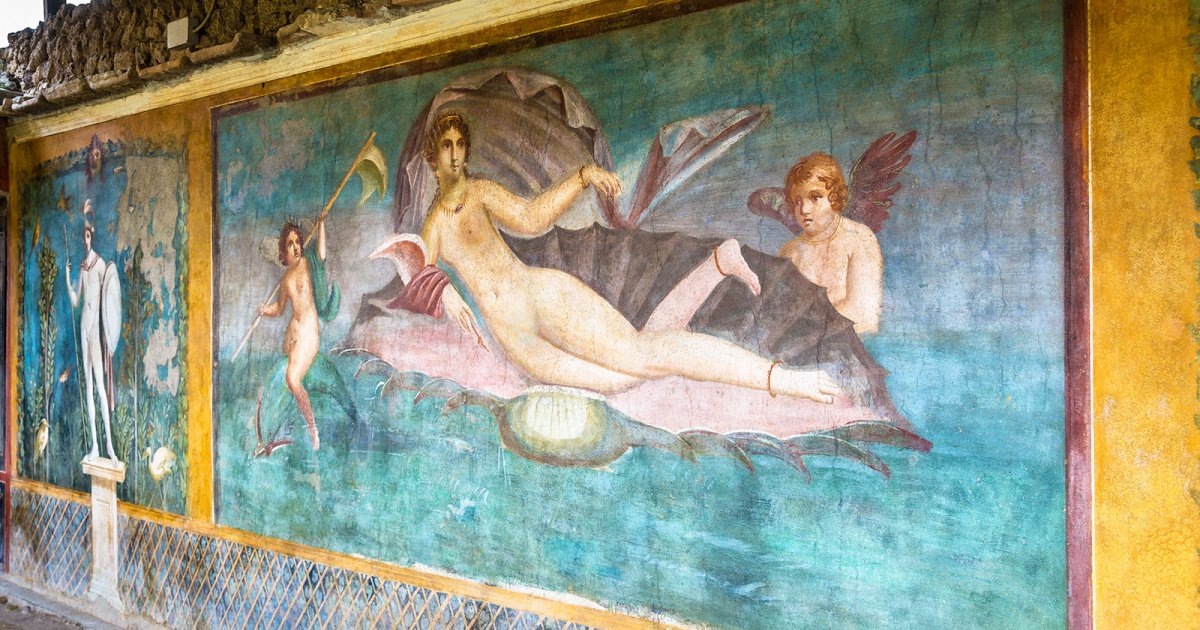POMPEI INTRODUCTION, Frescoes
 Language: English / USA
Language: English / USA
Even though many mural paintings have been detached from the walls and you have to go to the archaeological museum to see them today, many Pompeian homes still have part of their pictorial decoration.
The styles used to paint the Pompeian walls are very original and are usually divided into four categories. The First Style is called "structural" because it consists of painting simple blocks and stones that stick out of the wall, highlighting the wall's structure and simulating a coating of colored marble. It is obviously the simplest and least expensive decoration. The best examples of this style are in the House of Sallustio and the House of the Faun.
The Second Style is called "architectural" because it has large frames with depictions alternating with architectural perspectives. So the walls appear to be decorated with arches, columns, and aedicules that are actually just painted on. Among this type of illusion you'll also see highly original elements like fake hanging paintings or landscapes that seem to stretch beyond the walls they're painted on. Thus the space of a room will appear smaller or bigger depending on the elements that are painted in it. This style is characteristic of the first century BC and you can see several examples in the House of the Labyrinth, and especially in the frieze of the Villa of the Mysteries.
The Third Style is called "ornamental" because it shows great care in details, the finishing of colors, and execution. Instead of the complex perspectives of the previous style, in this style only a few painted architectural elements divide the surfaces. The figures stand out against a compact, single color background, as if there was an indefinite space on the wall. It was used starting in 14 AD and its best examples can be found in the House of Lucrezio Frontone.
The Fourth Style is called "fantastic" thanks to its totally unrealistic architectures and perspectives and being chock-full of decorative elements. It is the most recent of the four styles, as you could have guessed from having seen it in the villas that were rebuilt or undergoing reconstruction after the disastrous earthquake of 62 AD.
FUN FACT: another important shop in Pompeii was the Thermopolium, the ancestor of our modern day restaurants, and it was very popular. Here's an ancient recipe for you: Babylonian dates filled with nuts, pine nuts, or pepper, then salted and fried in honey!



